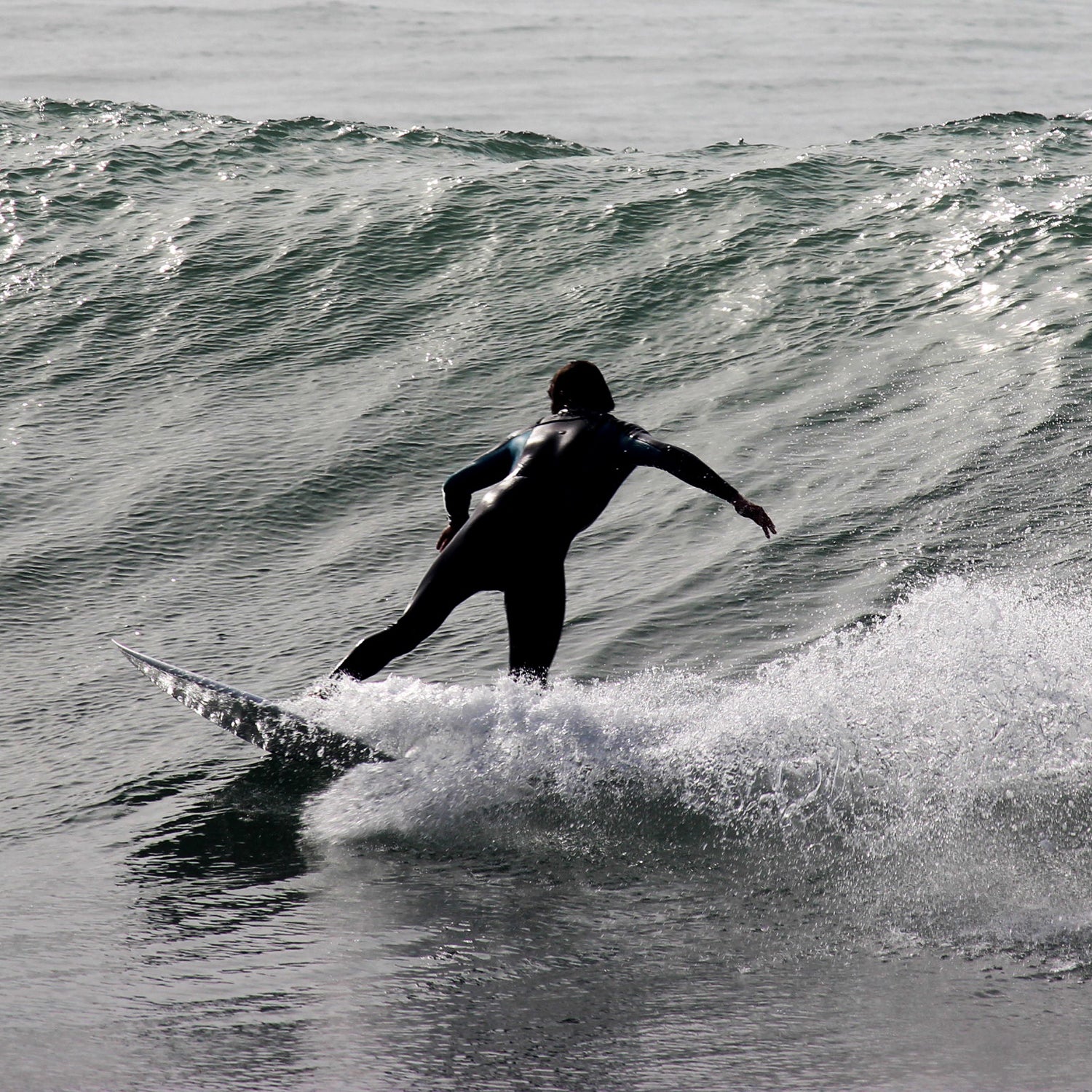Pro surfer Nik Zanella has spent much of his life charting little-surfed coastlines in places like Tunisia, Greece, Kenya, and his native Italy. Over the past seven years he’s mapped China’s entire surf coast, from the islands off Shanghai to tropical Hainan Island. But his next mapping expedition is bound to be the most surreal: the empty breaks and frigid waters of North Korea.
Starting Sunday, Zanella and New Jersey-based will lead ten foreigners—mostly beginners from the U.S. and Germany—on the first-ever surf tour of the reclusive Democratic People’s Republic of Korea (DPRK). The trip, which will last seven nights and costs $3,200 per traveler, will be a true expedition: The east coast of the Korean Peninsula is blocked from heavy Pacific swells by Japan and parts of Russia, so there’s no real surf culture—not even much beach culture, Zanella says. South Korea hosts an annual international surf competition on the holiday island of Jeju, off the peninsula’s southern point, but that’s about it. The northern coast is entirely unexplored for surfing opportunities.
But after a year of studying North Korea’s beaches and bays from satellite imagery, Zanella is optimistic. There are indicators that a 90-degree easterly wind could drum up some swell. There are some rocky outcroppings that might be the makings for some sweet point breaks. Majong beach, on the northern east coast, will have the best chance of good surf, Zanella says. Then there are the bays south of Wonsan, a popular high-end vacation destination in the southeast with sheltered, sandy beaches. “Those will hide some jewels on the right swells,” he says. Zanella is hoping to catch a typhoon positioned off the coast of Japan, which would create the best surf quality.
“Wave quality is pretty much the same as in South Korea and in continental China: favorable conditions for beginners and intermediate surfers, with plenty of safe easy beach breaks,” Zanella says. “I’m also sure that there are great point break waves along the east coast, the kind of waves that professionals like to ride.”
Pros haven’t had much chance to scour North Korea’s 5,260-mile coastline because the government reguarly closes its borders, occasionally incarcerates Westerners for alleged wrongdoings, and is, generally speaking, unaccessable for most travelers. Despite its hostility towards the West, the DPRK has warmed to tourism in the last 15 years. No one is certain of the reasons, but it’s safe to say the country welcomes foreign currency. It now receives some 5,000 Western visitors each year, according to estimates from Beijing travel company .
“Wave quality is pretty much the same as in South Korea and in continental China: favorable conditions for beginners and intermediate surfers, with plenty of safe easy beach breaks,” Nik Zanella says.
Uri Tours’ surf trip is one of a growing number of sport-focused journeys to the country. An annual international marathon in the capital city of Pyongyang, founded in 1981, began accepting foreigners in 2000. North Korea’s first ski resort, at Maski Pass, opened in December 2013 (foreigners are welcome). Uri recently started offering an eight-day, 150-kilometer cycling trip through the country’s northern reaches. Foreigners are also invited to the DPRK Amateur Golf Open, a 36-hole annual tournament at the country’s lone golf course at Taicheng Lake, 16 miles from Pyongyang. (This year’s tournament took place last weekend.)
But why surfing? And why now?
Last year, Zanella, who coaches China’s national surf team, approached Andrea Lee, Uri’s founder and CEO, and pitched the DPRK surf trip. Lee took the proposal to North Korean officials, who must approve every new tour to the country. “The proposal for the surf trip was really well received by the DPRK authorities,” says Lee, a Korean-American who has completed close to 100 trips to the DPRK in 12 years. “They want to develop surf tourism as much as we do.” Demand was high: The surf trip sold out quickly and there is already a full list for next year’s dates.
During this year’s tour travelers will stop at Pyongyang’s Juche Tower, the Mansudae Grand Monument, famous for its massive bronze statues of Kim Il Sung and Kim Jong Il, and the Korean Demilitarized Zone. But the focus will be on scoping the surf and sketching the rough edges of the country’s surf bounty—hunting for prime surfing locations, doing risk assessment, and developing evacuation and safety plans. Each morning, tour guests will perform dawn patrol and check surf conditions before determining the day’s surf spot. They’ll learn the methods of bathymetry—the study of underwater depth of lake or ocean floors—from a professional surfer. They’ll also participate in a surf camp which will be open to local North Koreans. Just how much contact visitors will have with locals is unclear—the country typically doesn’t allow those kinds of casual interactions. But on the last night, the group is scheduled to have a beach bonfire with North Koreans over soju (a popular Korean liquor), and local Taedonggang beer.
Locals will be invited to take part in the seminars and surfing lessons, but the learning curve will be steep. “There have been a handful of surfers who have exposed some locals to surfing, but it’s safe to say that there are no regular surfers,” Lee says. “We hope that changes.”


